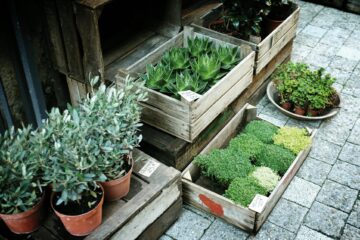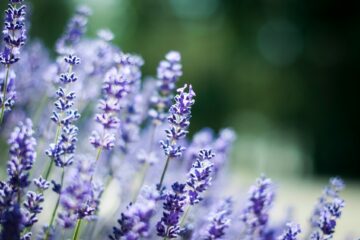Are you tired of buying expensive herbs from the grocery store and watching them wilt in the refrigerator before you have a chance to use them? Why not consider growing fresh herbs at home? Not only is it a rewarding and cost-effective endeavour, but it also allows you to enjoy a continuous supply of aromatic, flavourful herbs for your cooking. In this complete guide, we will walk you through the process of planting, caring for, and harvesting herbs, as well as provide some tips on how to incorporate them into your culinary creations.
Choosing the Right Herbs
The first step in growing fresh herbs at home is to decide which herbs you would like to cultivate. Consider the types of cuisine you enjoy and the herbs that feature prominently in those dishes. Some popular options for home herb gardens include basil, mint, parsley, coriander, thyme, oregano, sage, and rosemary. These herbs are versatile, relatively easy to grow, and can be used in a wide variety of recipes, making them great choices for beginners.
Planting Your Herb Garden
Once you’ve selected the herbs you would like to grow, it’s time to start planting. Most herbs thrive in well-drained soil and require plenty of sunlight, so be sure to choose a location for your herb garden that receives at least 6 hours of sunlight each day. If outdoor space is limited, you can also grow herbs in pots or containers on a sunny windowsill or balcony.
When planting your herbs, it’s important to ensure that each plant has enough space to spread its roots and grow. Be mindful of the specific needs of each herb; for example, mint tends to spread rapidly and may benefit from being planted in a separate container to prevent it from overpowering other herbs. As a general rule, most herbs prefer soil with a neutral pH level and benefit from regular watering to keep the soil consistently moist.
Caring for Your Herbs
One of the great things about growing herbs at home is that they generally require minimal maintenance once they are established. Regular watering and occasional fertilisation are typically all that’s required to keep your herbs healthy and thriving. Keep an eye on your herbs for any signs of pests or disease, and take swift action to address any issues that arise.
Pruning is another important aspect of caring for your herb garden. Regularly trimming back your herbs not only keeps them neat and tidy, but it also encourages new growth and prevents the plants from becoming woody or leggy. As a bonus, you can use the trimmings in your cooking or preserve them for later use.
Harvesting and Using Your Herbs
When it comes to harvesting your herbs, it’s best to do so in the morning when the aromatic oils are at their peak. Use sharp scissors or pruning shears to snip off the top few inches of growth from each stem, taking care not to remove more than one-third of the plant at a time. Regular harvesting not only promotes bushier, healthier plants but also allows you to enjoy a constant supply of fresh herbs for your culinary endeavours.
Fresh herbs can be used in a myriad of ways in cooking. Add them to salads, soups, and stews for a burst of flavor, or use them to infuse oils, vinegars, and butters. You can also create your own herb blends and seasoning mixes to elevate your dishes to new heights. In addition to their culinary uses, many herbs have medicinal properties and can be used to make soothing teas or natural remedies.
Conclusion
Growing your own fresh herbs at home is a rewarding and enjoyable experience that brings a touch of nature and flavour to your everyday life. By following the steps outlined in this complete guide, you can create a thriving herb garden that provides an abundant supply of aromatic, flavourful herbs for your cooking adventures. Whether you have a green thumb or are just starting out on your gardening journey, cultivating herbs at home is a simple and satisfying way to enhance your culinary creations and bring a little bit of the outdoors inside.


